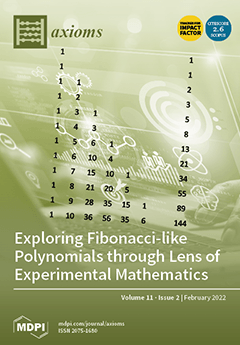The purpose of this article is to introduce a new complete multiple
q-hypergeometric symbolic calculus, which leads to
q-Euler integrals and a very similar canonical system of
q-difference equations for multiple
q-hypergeometric functions.
q-analogues of recurrence formulas in
[...] Read more.
The purpose of this article is to introduce a new complete multiple
q-hypergeometric symbolic calculus, which leads to
q-Euler integrals and a very similar canonical system of
q-difference equations for multiple
q-hypergeometric functions.
q-analogues of recurrence formulas in Horns paper and Borngässers thesis lead to a more exact way to find these Frobenius solutions. To find the right formulas, the parameters in
q-shifted factorials can be changed to negative integers, which give no extra
q-factors. In proving these
q-formulas, in the limit
we obtain versions of the paper by Debiard and Gaveau for the solution of differential or
q-difference equations. The paper is also a correction of some of the statements in the paper by Debiard and Gaveau, e.g., the Euler integrals and other solutions to differential equations for Appell functions, also without references to page numbers in the standard work of Appell and Kampé de Fériet. Sometimes the
q-binomial theorem is used to simplify
q-integral formulas. By the Horn method, we find another solution to the Appell
function partial differential equation, which was not mentioned in the thesis by Le Vavasseur 1893.
Full article




